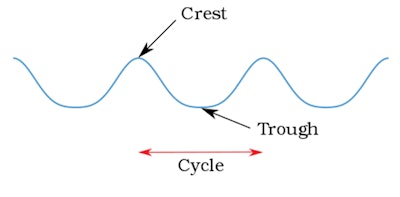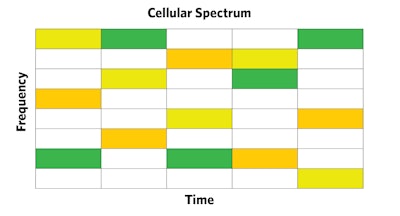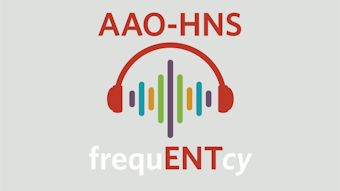Tech Talk: 5G – The Next Generation of Cellular Service
There is a lot of buzz about 5G, the next generation of cellular service. Carriers tout mobile speeds equivalent to Wi-Fi. The Internet-of-Things, including smart highways and driverless cars, will finally become a reality.
Mike Robey, MS, AAO-HNS/F Senior Director, Information Technology
There is a lot of buzz about 5G, the next generation of cellular service. Carriers tout mobile speeds equivalent to Wi-Fi. The Internet-of-Things, including smart highways and driverless cars, will finally become a reality. While this all may be true, 5G is here to stay if for no other reason than it is the next generation. What does this all mean for you? This article provides understanding of cellular service, why you will need a new smartphone for 5G, and some of the issues surrounding 5G’s rollout.
 https://en.wikipedia.org/wiki/File:Crest_trough.svg
https://en.wikipedia.org/wiki/File:Crest_trough.svg
Although there are many aspects and techniques for interjecting 0s and 1s in a radio wave, in simplest terms, consider a crest is a 1 and a trough is a 0. So how many 0s and 1s can be broadcast over a set period?

Expanding on how waves carry digital signals, let us transition to frequency spectrum, which is simply a range of frequencies. The Federal Communications Commission assigns a range of frequencies for different types of wireless services. A carrier’s tower transmits waves within the assigned spectrum for the service provided. Each carrier maximizes the total amount of data it carries within its finite spectrum. One of the ways carriers accomplish this is through cellular spread spectrum.
 https://en.wikipedia.org/wiki/File:Multiplexing_diagram.svg
https://en.wikipedia.org/wiki/File:Multiplexing_diagram.svg
Another important technique to maximize broadcast space is frequency multiplexing. The carriers take individual frequency bands, as shown on the left in the diagram below, and combine them into one signal for transmission. The receiving end, on the right, then splits the received signal back out into the original bands. For cable television this is how you get all the channels over the single cable.
One more important aspect of wireless communications is the antenna. Most smartphones include Wi-Fi, Bluetooth, GPS, and cellular services. Each of these services uses a different frequency spectrum. Each frequency spectrum requires its own antenna. Your smartphone has an antenna for each communications type. With the background in how wireless communications work we will transition to a brief history of cellular service.

5G’s higher frequency is also the reason new towers are needed. As explained earlier, higher frequencies carry more data but do not travel as far. More towers in closer proximity to one another are necessary to support 5G.
The carriers do not mention a negative aspect of 5G. Its higher frequencies do not go through solid objects as readily as previous generations’ signals. 5G may not work in buildings without indoor access points (small towers). A 5G smartphone will still work indoors because it has antennas for 4G and Wi-Fi. As a sidenote, the iPhone 12’s 5G antenna is visible from the outside. My guess is this is intentional due to 5G’s limitations for penetrating through outside walls.
Your smartphone is an engineering marvel and an example of miniaturization at its finest. Not only is it a two-way radio, it handles many aspects of signal processing, such as cellular spectrum and frequency multiplexing. Its multiple antennas enable you to surf the web from anywhere and hail a ride share. Why, even with 5G, it can still make telephone calls.























